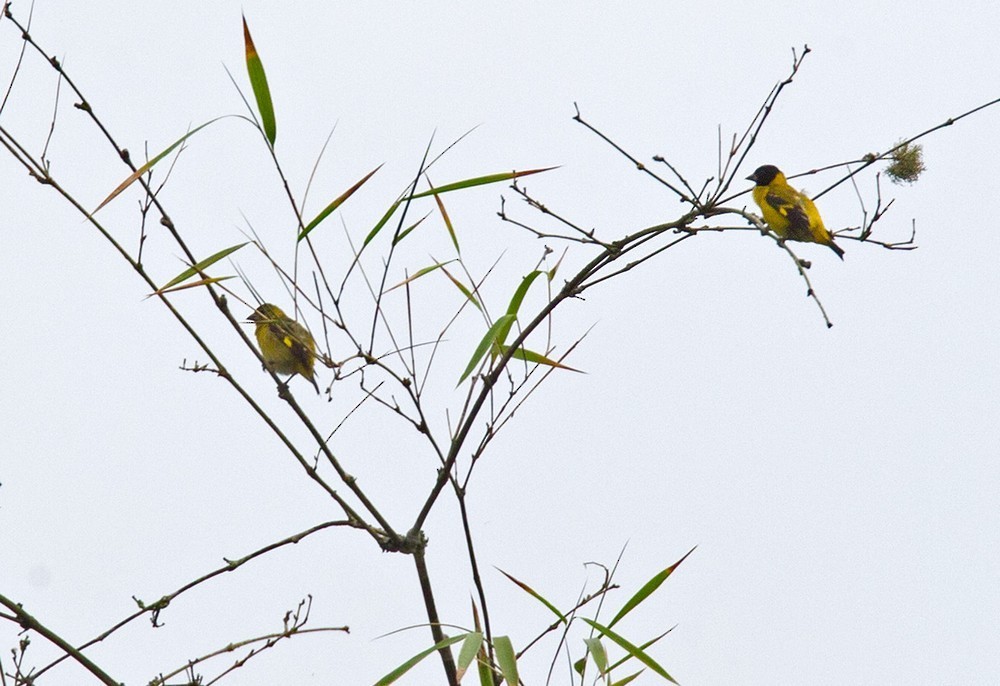Saffron Siskin
A species of Siskins and new world goldfinches Scientific name : Spinus siemiradzkii Genus : Siskins and new world goldfinches
Saffron Siskin, A species of Siskins and new world goldfinches
Botanical name: Spinus siemiradzkii
Genus: Siskins and new world goldfinches
Content
Description General Info
 Photo By Lars Petersson
Photo By Lars Petersson Description
The saffron siskin grows to a length of about 10 to 10.5 cm (3.9 to 4.1 in). Like other siskins, the colours of this bird are black, olive and yellow, with black wings with a prominent yellow band on the bases of the flight feathers and another on the wing coverts. The male differs from the male hooded siskin (Spinus magellanicus) in having an unstreaked, golden-olive back and bright yellow underparts. The female differs from the female hooded siskin by being altogether yellower, with yellow underparts rather than grey. 
Size
11 cm
Nest Placement
Shrub
Feeding Habits
Saffron Siskin primarily eat seeds, buds, leaves, and some insects. Saffron Siskin forage low in tall grasses or on the ground, often in pairs, small groups, or flocks of up to 30. They may mix with other seed-eaters outside the breeding season.
Habitat
Saffron Siskin is typically found along the edges of lowland dry deciduous forests and in secondary growth woodlands that feature tall grasses, weedy areas, and flowering plants. Its habitat also extends to brushy and dry scrub regions, and it has been observed in the outskirts of cultivated fields, along roadsides, and in suburban parks, as well as urban environments.
Dite type
Granivorous
General Info
Feeding Habits
Bird food type
Distribution Area
The saffron siskin is endemic to southwestern Ecuador and northwestern Peru. It is an uncommon bird found near the edges of dry woodland and in adjoining scrubland at altitudes below about 600 m (2,000 ft). 
Species Status
This bird is generally uncommon and seldom seen. The total population is estimated to be under 10,000 individuals and is probably in decline because of the conversion of forest for agricultural uses. Despite the bird occurring in the Machalilla National Park and five other protected areas in Ecuador, the International Union for Conservation of Nature assesses it as being a "vulnerable species". The high rate of deforestation in the country adds to the likeliness of the threat that it faces. 

 Photo By Lars Petersson
Photo By Lars Petersson